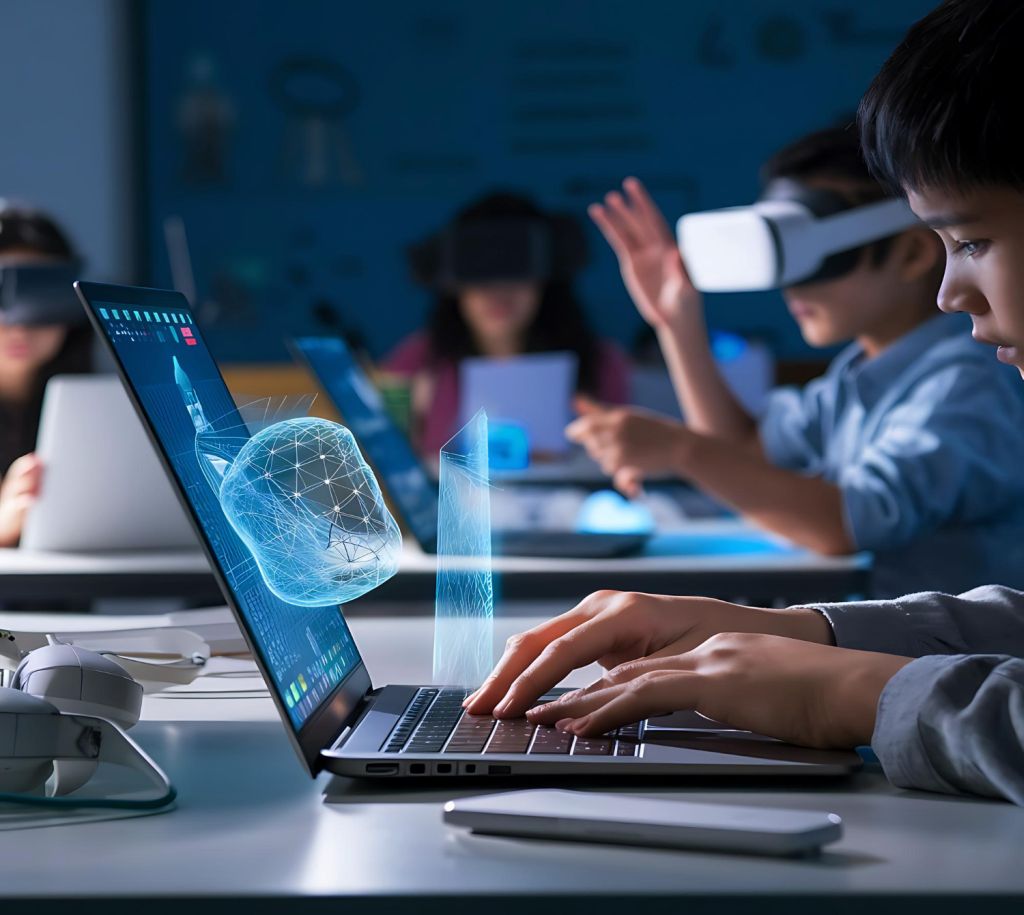Education technology is not just a buzzword—it’s a revolution that is transforming classrooms, engaging students, and empowering educators worldwide. The landscape of learning is evolving rapidly with the integration of cutting-edge technologies. This blog post explores the most impactful trends and innovations in education technology, offering educators, IT professionals, and students a comprehensive guide to the future of learning.
Introduction
The incorporation of technology in education has become more than just an enhancement; it is now a necessity. Modern classrooms are integrating advanced technologies to create dynamic and interactive learning environments. This evolution is driven by the need for personalized learning experiences, increased student engagement, and the democratization of education. Whether it’s through gamification, artificial intelligence, or virtual reality, education technology is here to stay, and it’s reshaping the future of learning.
Trends in Education Technology
Personalized Learning Platforms
One of the most significant trends in education technology is the rise of personalized learning platforms. These systems tailor educational content to meet the unique needs of each student. By analyzing data on student performance, these platforms can adapt lessons to ensure that every learner gets the support they need.
Personalized learning platforms enhance student engagement and improve academic outcomes. They provide real-time feedback, allowing teachers to address learning gaps promptly. This approach fosters a more inclusive classroom where every student can thrive.
For example, platforms like Khan Academy and DreamBox are revolutionizing how students learn mathematics by providing tailored exercises and instant feedback. Such innovations are proving to be game-changers in education.
Gamification in Education
Gamification is another trend that’s making waves in the educational sector. By incorporating game elements into learning activities, educators can make lessons more engaging and enjoyable for students. This method taps into the intrinsic motivation that games naturally invoke, fostering a love for learning.
Games can simplify complex concepts, making them easier to understand. Additionally, gamified learning environments encourage healthy competition and teamwork among students. Platforms like Kahoot! and Classcraft are excellent examples of how gamification is being used to create interactive and fun learning experiences.
Research has shown that gamification can significantly improve student performance and retention rates. By transforming the traditional classroom into a dynamic and interactive space, gamification is helping students achieve better outcomes.

Augmented Reality (AR) and Virtual Reality (VR) in the Classroom
The use of AR and VR in education is opening up new possibilities for immersive learning experiences. These technologies allow students to explore virtual worlds, conduct experiments, and visualize complex concepts in a way that traditional methods cannot match.
AR and VR can bring history to life, enable virtual field trips, and provide hands-on experiences in subjects like science and engineering. For instance, Google Expeditions allows students to take virtual tours of historical sites and natural wonders, enhancing their understanding of the world.
These technologies also support remote work and learning, making education accessible to students regardless of their location. The integration of AR and VR in classrooms is not just a trend but a glimpse into the future of education.
Artificial Intelligence (AI) for Educational Purposes
AI is transforming education by providing intelligent tutoring systems, automating administrative tasks, and enabling personalized learning experiences. AI-powered tools like chatbots and virtual assistants can provide instant support to students, answering their queries and guiding them through their studies.
Instructors can use AI to identify at-risk students and provide targeted interventions. Additionally, AI can help in grading and providing feedback, freeing up valuable time for educators to focus on teaching.
Platforms like Coursera and Duolingo use AI to tailor learning paths for students, ensuring they get the most out of their educational experiences. The potential of AI in education is immense, and its applications are only beginning to be explored.
Innovations Making a Difference
Case Studies and Success Stories
Educational institutions around the world are witnessing the positive impact of technology. For example, the use of tablet-based learning in African schools has significantly improved literacy rates. Similarly, flipped classrooms, where students watch lectures online and engage in hands-on activities in class, are gaining popularity for their effectiveness.
Success stories from institutions like Stanford University, which uses AI to enhance learning, and the University of Melbourne, which employs VR for medical training, highlight the transformative power of education technology. These examples serve as inspiration for other institutions to adopt innovative approaches to teaching.
Impact on Student Engagement and Academic Performance
Technology is not only making education more accessible but also more engaging. Interactive tools, multimedia content, and virtual simulations capture students’ attention and make learning more enjoyable. Studies have shown that students who use technology in the classroom are more motivated and perform better academically.
For instance, a study conducted by the Massachusetts Institute of Technology (MIT) found that students who used digital tools for learning showed significant improvements in their test scores. These findings underscore the importance of integrating technology into the curriculum to enhance student engagement and academic performance.
Adapting and Adopting Technologies
Educators are increasingly recognizing the need to adapt to new technologies. Professional development programs and workshops are being organized to help teachers integrate technology into their teaching practices. By staying updated on the latest trends, educators can better prepare their students for the future.
Schools are also investing in infrastructure to support technology adoption. This includes upgrading internet connectivity, providing digital devices to students, and implementing learning management systems. Such efforts ensure that technology is seamlessly integrated into the learning process.
The Future of Education with Technology
Predictions for the Educational Landscape
The future of education is undoubtedly intertwined with technology. Predictions suggest that AI, AR, and VR will become even more integral to the learning experience. Adaptive learning systems will provide highly personalized educational experiences, while blockchain technology could revolutionize credentialing and record-keeping.
Remote work and learning will continue to grow, enabling students from diverse backgrounds to access quality education. This shift will democratize learning, making it possible for anyone with an internet connection to pursue their educational goals.
Global Education and Access to Learning Resources
Technology is playing a crucial role in bridging the education gap. Initiatives like One Laptop per Child and various online learning platforms are providing access to education in remote and underserved areas. By leveraging technology, we can ensure that every child has the opportunity to learn and succeed.
The use of open educational resources (OER) is also on the rise. These free, openly licensed materials make high-quality educational content accessible to everyone. Platforms like Khan Academy and OpenStax are leading the way in providing free educational resources to learners worldwide.
Conclusion
Staying updated on the latest trends and innovations in education technology is essential for educators, IT professionals, and students. The integration of technology in education is not just a trend but a fundamental shift that is reshaping the future of learning. By embracing these advancements, we can create more engaging, inclusive, and effective educational experiences.
For those looking to explore further, consider joining professional development programs, participating in online courses, and engaging with the education technology community. Together, we can harness the power of technology to transform education and unlock new opportunities for learners everywhere.















